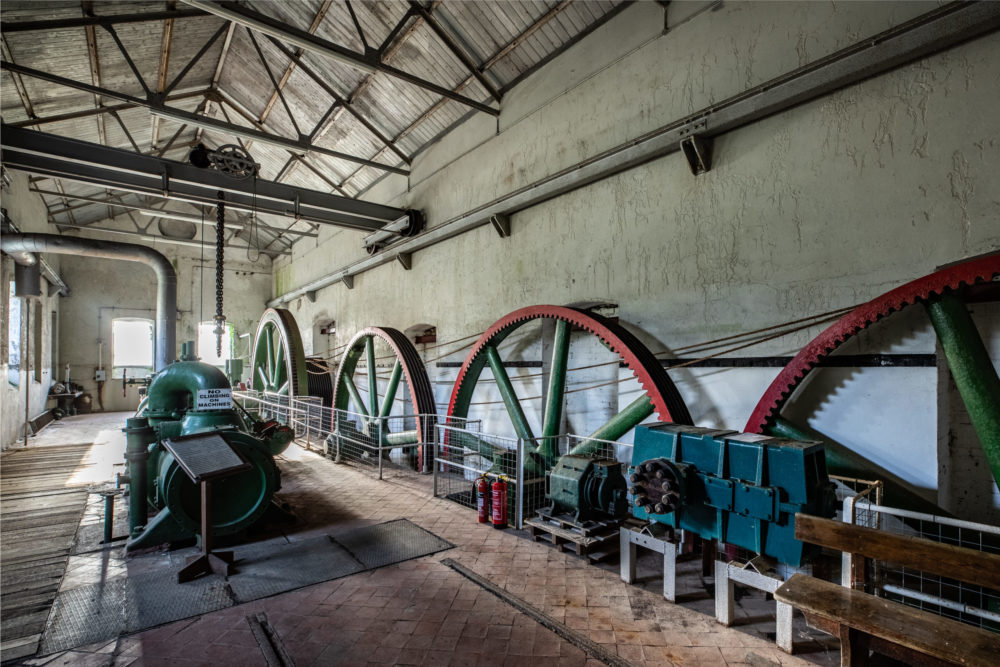Plans backed to reopen industrial museum

Richard Youle, local democracy reporter
Long-term plans to modernise and reopen an industrial museum, which struggled to attract visitors, have been approved.
Kidwelly Industrial Museum was open between 1988 to 2017 to preserve what a Carmarthen Council cabinet report described as Britain’s earliest tinplate works and “a unique survivor of Carmarthenshire’s industrial heritage”.
The tinplate works, north-east of Kidwelly, was a major local employer and operated between 1737 and 1941.
The 13-acre museum site was leased to a trust in recent years and includes listed buildings and scheduled ancient monuments such as a 160-ft chimney, steam-powered hot and cold rolls, and natural habitat.
Vandalised
Some buildings have been vandalised and the site has returned to local authority control since it closed.
Cabinet members were presented with four options at a meeting on Monday, November 4: disposal, mothball, reopen in its existing format, or restore, modernise what’s on offer and reopen.
While two of the first three options were considered viable, cabinet approved modernisation and reopening – the most expensive option.
Buildings would be revamped, renewable energy generated onsite, acres of habitat opened up for visitors, and a new cafe and larger parking area provided.
Initial reopening costs have been estimated at £4.2m, external funding would be crucial, and it could be up to nine years before the museum fully reopens.
Global impact
The report said: “The museum will explore the global impact of the tinplate industry, including imperial expansion, international technology and design flow, and Kidwelly’s role as an early pioneer of tinplate working in Wales.”
Cabinet members agreed to fund a business feasibility study to explore their preferred option further, prior to the submission of a formal business plan.
Council leader Darren Price described the plan as a long-term objective.
“There is a duty to safeguard listed buildings onsite,” he said.
Cllr Hazel Evans, cabinet member for regeneration, leisure, culture and tourism, said the preferred option had the most opportunity of the four to generate income.
An options appraisal study commissioned by the council said the museum used to be focused on depicting working life in days gone before proposals to turn it into Wales’s national tinplate museum.
“When previously open the museum struggled with what it is or should be,” said the study.
It said even with free admission, the museum only attracted around 2,000 visitors per year in its later years.
Guided tours
The options appraisal envisaged guided tours of the buildings and adjacent habitats, demonstrations of heritage skills, firing up of restored engines from time to time, seasonal events, talks and presentations, and a farmers’ market, among other things. An entry fee would apply.
The appraisal added a new charity focused on education and research could team up with the council as part of a governance structure.
A property condition survey carried out in 2023 identified eight faults at the museum indicating risk of immediate failure, and 88 faults requiring major repair.
Speaking in August last year, Malcolm MacDonald, chairman of Kidwelly Industrial Museum Trust, which used to run the museum, said it had been reliant on volunteers, with funding over the years coming from the county council, Kidwelly Town Council and donations.
Asked at the time if he would like the trust to have a role to play in the site’s future, he said: “Yes, I think that is important.”
Support our Nation today
For the price of a cup of coffee a month you can help us create an independent, not-for-profit, national news service for the people of Wales, by the people of Wales.





Interesting contrast between Carmarthen Council’ s approach here and Caerphilly Council’s approach regarding Llancaiach Fawr and Blackwood Miners’ Institute. Perhaps Caerphilly could learn from how Carmarthen’s current intentions developed?
I don’t know the facts but from the article it involves revisiting a previous decision to close the museum. Caerphilly should take note.
The intrinsic value of cultural assets are too easily lost in the short-termism of balancing budgets.